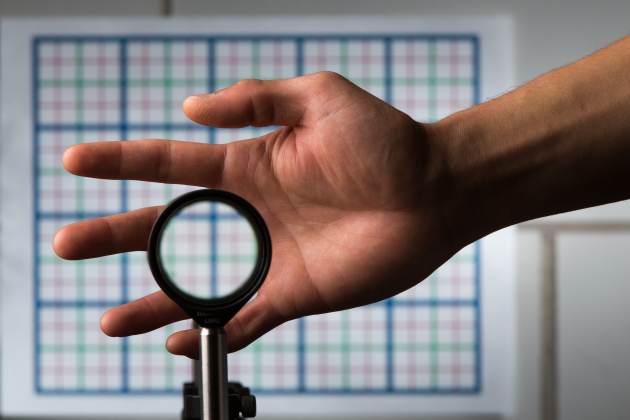Inspired perhaps by Harry Potter’s invisibility cloak, scientists at the University of Rochester have recently developed a simple and inexpensive lens device that hides objects from view.
There have been many complex approaches to cloaking all with the basic goal of taking light and have it pass around something as if it isn’t there.
“Many cloaking designs work fine when you look at an object straight on, but if you move your viewpoint even a little, the object becomes visible,” explained John Howell, a professor of physics at the University of Rochester.
“This is the first device that we know of that can do three-dimensional, continuously multidirectional cloaking,” said Choi, a PhD student at Rochester’s Institute of Optics.
The Rochester Cloak can be scaled up as large as the size of the lenses, allowing fairly large objects to be cloaked. And, unlike some other devices, it’s broadband so it works for the whole visible spectrum of light, rather than only for specific frequencies.
 While their device is not quite like Harry Potter’s invisibility cloak, Howell had some thoughts about potential applications, including using cloaking to effectively let a surgeon “look through his hands to what he is actually operating on,” he said. The same principles could be applied to a truck to allow drivers to see through blind spots on their vehicles.
While their device is not quite like Harry Potter’s invisibility cloak, Howell had some thoughts about potential applications, including using cloaking to effectively let a surgeon “look through his hands to what he is actually operating on,” he said. The same principles could be applied to a truck to allow drivers to see through blind spots on their vehicles.
Howell became interested in creating simple cloaking devices with off-the-shelf materials while working on a holiday project with his children.
For instructions on how to build your own Rochester Cloak, and a link to their paper submitted to the journal Optics Express, visit U. of Rochester News Center.
(WATCH the video below)




















